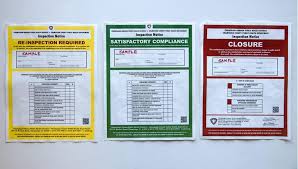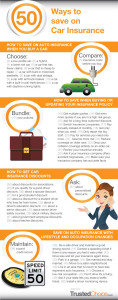Posts Categorized Uncategorized
Don’t Make These Insurance Mistakes!
The start of a new year (and preparing for tax season) is a perfect time to review your personal insurance policies. As you consider what changes need to be made on your home and auto policies in 2015 make sure you are not guilty of making some of these common insurance mistakes that often result in paying higher premiums or even having your policy cancelled by your carrier – content courtesy of our friends at insure.com (read the original article here).
1. Don’t pay your premiums on time.
When you don’t pay your premiums you’ll face cancellation or policy lapse, depending on the insurance type. If your car insurance lapses you’ll face higher rates when you go to buy another policy even if it is with a different carrier or agent.
2. Neglect to make a home inventory.
If you have a large homeowners insurance claim – from a fire or tornado, for example – and have no home inventory, you’ll probably have a hard time reconstructing from memory a list of everything you owned. This means you won’t be able to receive reimbursement for everything to which you’re entitled. You won’t make a claim for items you forgot you ever had in the first place.
3. Blow off open enrollment for health insurance.
Don’t forget to add or remove “dependents” from your health plan at open enrollment time. Open enrollment is your chance during the year to make changes like this. For example, say your daughter graduated from college and got a job with benefits – you’d want to drop her from your plan. Or maybe your daughter lost her job and needs insurance – you can add her until she’s age 26. It’s also the time to change deductibles and other coverage options.
Some life events will make you eligible to make changes any time of year; for example, if you get married, you can add your wife to your health plan even if it’s not open enrollment time.
4. Have a baby but don’t add the little one to your health insurance plan within 30 days of birth.
Babies are expensive. Don’t add to the expense by paying all their health care out of your pocket! That’s what you’ll be doing if you don’t add your new child to your health plan within 30 days – or the deadline outlined by your plan. If you miss that window you’ll have to wait until your plan’s next open enrollment period to add the child as a “dependent.”
5. Drive for Uber.
A personal automobile policy is designed to cover only the traditional uses of private passenger vehicles. It is not designed to cover the commercial use of a vehicle – including making money via a ride-sharing service.
This exclusion extends beyond ride-sharing to any business use of a vehicle, such as delivering newspapers or using a pickup to plow snow.
6. Loan your car.
Simply letting a friend borrow your car could affect your rates. You’re responsible for what happens to and with your car! If your pal hits someone or something and is at-fault for the accident, the liability claim goes on your record and could cause a rate increase at renewal time.
7. Make claims for every little scratch and dent.
You pay good money for your insurance, so might as well use it, right?
Better think again: Actually using your insurance could increase your rates. Your car insurance policy is not a car-maintenance policy. It’s intended to protect you from unforeseen accidents. Definitely avoid making a claim for damage that’s less than your deductible. And don’t pile up small claims, which could provoke a rate increase down the line.
Tips for Surviving Severe Cold Weather
With the recent barrage of snow and bitter cold temperatures across most of Central Illinois, it is important to review some simple steps to take in order to keep your home in working order over winter and most importantly, avoid submitting a homeowners claim! Courtesy of the Insurance Information Institute.
- Keep sidewalks and entrances to your home free from snow and ice.
- Watch for ice dams near gutter downspouts. Keep gutters free of leaves and debris so melting snow and ice can flow freely. Ice dams can cause water to build up and seep into your house.
- Keep the house heated to a minimum of 65 degrees. The temperature inside the walls where the pipes are located is substantially colder than the walls themselves. A temperature lower than 65 degrees will not keep the inside walls from freezing.
- Identify the location for the main water shutoff in your home. Find out how it works in case you have to use it.
- Open hot and cold faucets enough to let them drip slowly. Keeping water moving within the pipes will prevent freezing.
- If you haven’t already, make sure all hoses are disconnected from outside spigots.
- If your garage is attached to your house, keep the garage doors closed. The door leading to the house is probably not as well-insulated as an exterior door.
- If ice forms on tree limbs, watch for dead, damaged or dangerous branches that could break and fall because of ice, snow or wind and damage your house, a car, or injure someone walking near your property.
- If you use fireplaces, wood stoves and electric heaters, watch them closely and make sure they are working properly.
- Remember to close the flue in your fireplace when you’re not using it.
- If you have to leave your home on a trip, ask a neighbor to check the house regularly. If there is a problem with frozen pipes or water leakage, attending to it quickly could mean far less damage.
- If you plan to be away for an extended period of time (or if temperatures are expected to remain below freezing), have the water system, including pool plumbing, have the water system drained by a professional to keep pipes from freezing or bursting.
If you discover frozen pipes in your home don’t wait for them to burst. Take measures to thaw them immediately, or call a plumber for assistance.
- If your pipes burst, first turn off the water and then mop up spills. You don’t want the water to do more damage than it already has.
- Call your agent or company as soon as you can. An insurance adjuster doesn’t need to see the spill before you take action. However, he or she will want to inspect any damaged items.
- Make temporary repairs and take other steps to protect your property from further damage. Remove any carpet or furniture that can be further damaged from seepage.
- Make a list of the damaged articles.
- Save the receipts for what you spend—including additional living expenses if you must leave your home until repairs are completed—and submit them to your insurance company for reimbursement.
Most homeowners policies will cover damage that results from a severe cold. For example, if house pipes freeze and burst or if ice forms in gutters and causes water to back up under roof shingles and seep into the house. You would also be covered if the weight of snow or ice damages your house.
However, most policies do not cover backups in sewers and drains, which can also happen in winter. Water damage due to back up of sewers and drains is generally purchased as an extended coverage to a standard homeowners insurance policy.
If your water damage, it is important to make sure that it is properly dried and repaired to prevent any potential problem with mold. Remember, mold can not survive without moisture. Go over your homeowners policy with your agent so you know what your policy covers!
Small Business Saturday
It’s Black Friday, and if you’re not working, chances are you’re out fighting the cold and the masses trying to find the best possible deals for all of your holiday shopping. Black Friday carries a negative stigma, and it certainly has a tendency to bring out the worst in a lot of people turning a trip to Target into a scene from the Hunger Games. But countless businesses truly rely on this shopping-frenzied weekend to have a successful year. So while the bigger retail chains steal most of the headlines on Black Friday, there’s been a recent movement not to forget the smaller retailers whose livelihood depends on the holiday season to turn a profit.
Small Business Saturday is a movement that began in 2010 highlighting the importance of shopping and spending locally. Check out their website here for more details. The movement extends beyond stressing the value of doing your Christmas shopping at a local retailer. Don’t forget about the local restaurants, hair stylists/barbershops, and other service based businesses whose employees depend on tips to provide for their families. Our agency believes this is an especially important movement because many of our clients are small businesses. We interact with the owners and employees of small businesses on a daily basis. We know how hard they work, and how much they value each sale they make, each customer that works through their door. So invest in your community by celebrating Small Business Saturday and keep local businesses going strong, not just this weekend but all year long.
Obamacare’s Inflated Enrollment Numbers
Despite multiple setbacks, last year the Obama administration met their goal of reaching over 7 million people to enroll in government-run healthcare exchanges as part of the implementation of the Affordable Care Act. The goal of 7 million enrollees came about as an estimate from the Congressional Budget Office (CBO) and was seen as a figure necessary for the success of the program. Now multiple news sources (links to those sources below) are reporting that figure to be inaccurate.
Investigators for the House Oversight and Government Reform Committee, using data from the U.S. Centers for Medicare and Medicaid Services, discovered that $380,000 dental plan subscribers were incorrectly added to the health care sign-up figure to raise the total above 7 million. Whether the miscalculation was done on purpose or in error is unknown, but it begs an all too familiar question: Is the administration flat out incompetent or engaging in deceitful manipulation of the facts?
Winter is coming . . . time to winterize your vehicle!
Mid-November in Central Illinois and the snow is already falling. Although most people around here will tell you they prefer a white Christmas, a white Thanksgiving is typically not a welcome sight. However, the early snow can be an important reminder that your daily commute to work and/or school is going to become increasingly treacherous in the next few months on top of putting your car through its hardest seasonal torture test. According to the Federal Highway Administration, 24% of all auto accidents are weather-related. Let me repeat that – nearly 1 out of every 4 vehicle crashes in America in some way results because of bad weather. So naturally, the amount of accidents will increase during these rugged winter months.
So if you are stubborn enough to continue living in an area whose climate imitates Siberia 4-5 months out of the year, the very least you can do is take some simple steps to winterize your vehicle. These steps not only limit the likelihood of an accident (thus limiting the likelihood of injury and the likelihood of having to file an auto claim), but also better protect your car from the elements to limit the cost of upkeep. This following list is courtesy of DMV.org. We particularly recommend item 6 – the emergency car kit. This is a necessity for all drivers and also makes a great gift for the practical person on your holiday shopping list.
1) Engine Coolant
You car’s coolant system is not intended only to keep your engine from overheating. It is also responsible for protecting your valuable engine against corrosion. Before the weather gets too cold, make sure you are using coolant with ethylene glycol to help protect your engine.
Every vehicle requires a certain ratio of coolant to water, and your owner’s manual or repair technician can explain what your engine needs. For most vehicles, a winter ratio is 60% coolant to 40% water. Adjusting this ratio is an important step in winterizing your car, so if you need help, ask someone who is experienced and knowledgeable.
2) Cold Weather and Battery Capacity
It isn’t only your engine that doesn’t like to start in the winter. Your battery capacity is reduced by the cold weather, too. A thorough inspection of your battery, cables, terminals, and fluid will help you make sure your car is ready for the winter.
Check over the battery cables for cracks and breaks. The terminals should fit snugly with no loose connections. You can check your battery fluid by uncovering the refill hole (or sometimes holes). If the level is below the bottom of the cap, refill with distilled water.
To read the level of charge in your battery, you will need to turn the engine off. Some batteries have a built-in hydrometer eye that tells you the amount of voltage remaining in the battery. If you prefer, a handheld hydrometer can be used to collect the same information.
While you’re inspecting your battery, look around for the manufacture date. Knowing how old your battery is can clue you in to when it will begin to lose charge. Shopping for a new battery? Never buy one with a six-month-old manufacture date.
3) Snow Tires
When it comes to really dealing with winter weather, your tires are out there mixing with the snow, sleet, and ice. Driving in snow can be very difficult and sometimes dangerous; still, the reality is you need to get to work.
Mounting the right tires on your car or truck can give you a huge advantage when trekking through snow. Many car makers and tire manufacturers recommend changing all four tires to snow tires in the winter. If you don’t swap all four, the difference between snow and summer tires can cause other problems for your vehicle.
If you live off the beaten path, you can even buy snow tires with studs to help you get where you’re going all winter long. When spring comes, though, you’ll be glad to get out of the heavy winter tires because your fuel efficiency and handling will improve with a less aggressive tire.
Another option is all-season tires that you drive year-round―winter and summer. The advantage of all-season tires is that you don’t change the tires before winter or need to keep two sets of rims. Of course, the disadvantage is that you don’t get all the great features of a specialized seasonal tire.
4) Windshield Treatment
An easily overlooked part of your winterizing program is your windshield. If you have ever driven behind another vehicle kicking up wet, dirty road snow, then you already have a true appreciation for windshield washer fluid.
For best results in clearing off cold, heavy grime, select a washer fluid with an antifreeze solution. But beware―some washer fluids can be harsh and damage your car’s paint.
5) Frozen Out
Door locks can freeze in cold weather and break your key if you try to force them open. The old fashion cure was warm water, but what if you’re not at home and don’t have any warm water nearby? Discount stores, auto parts stores, and even hardware stores sell glycerine you can use for de-icing. Think about where you keep it, however, because if the de-icer is in the glove box of your frozen-shut car, then it won’t help you any.
Stock a tube at home in the garage and also in your desk at work. That way whenever your locks freeze up, you’ll be able to solve the problem.
6) Emergency Kit
If you don’t already have an emergency kit in your car, consider putting together a few basics and stowing them in the trunk. Naturally, you’ll want to be sure your spare tire is in good shape with all the tools to change it out. But you might also want a few other emergency items in case you slide off the road and get stuck in a snow bank:
- Flares
- Blankets
- Boots
- Radio
- Engine oil
- Washer fluid
- Coolant
- Flashlight
Happy Halloween!
Halloween is a particularly great holiday because it allows adults and children to indulge in activities that are traditionally discouraged – namely dressing up like super heroes and eating candy until your stomach hurts. As important as it is to shed the burden of good behavior every October 31st, make sure you have at least one responsible adult willing to look after the horde while Trick-or-Treating. Here are some Halloween safety tips courtesy of safekids.org.
Walk Safely
- Cross the street at corners, using traffic signals and crosswalks.
- Look left, right and left again when crossing and keep looking as you cross.
- Put electronic devices down and keep heads up and walk, don’t run, across the street.
- Teach children to make eye contact with drivers before crossing in front of them.
- Always walk on sidewalks or paths. If there are no sidewalks, walk facing traffic as far to
the left as possible. Children should walk on direct routes with the fewest street crossings. - Watch for cars that are turning or backing up. Teach children to never dart out into the street or cross between parked cars.
Trick or Treat With an Adult
- Children under the age of 12 should not be alone at night without adult supervision. If kids are mature enough to be out without supervision, they should stick to familiar areas that are well lit and trick-or-treat in groups.
Keep Costumes Both Creative and Safe
- Decorate costumes and bags with reflective tape or stickers and, if possible, choose light colors.
- Choose face paint and makeup whenever possible instead of masks, which can obstruct a child’s vision.
- Have kids carry glow sticks or flashlights to help them see and be seen by drivers.
- When selecting a costume, make sure it is the right size to prevent trips and falls.
Drive Extra Safely on Halloween
- Slow down and be especially alert in residential neighborhoods. Children are excited on Halloween and may move in unpredictable ways.
- Take extra time to look for kids at intersections, on medians and on curbs.
- Enter and exit driveways and alleys slowly and carefully.
- Eliminate any distractions inside your car so you can concentrate on the road and your surroundings.
- Drive slowly, anticipate heavy pedestrian traffic and turn your headlights on earlier in the day to spot children from greater distances.
- Popular trick-or-treating hours are 5:30 p.m. to 9:30 p.m. so be especially alert for kids during those hours.
How to Save More $$ on Car Insurance
There’s often a lot of confusion regarding the way car insurance premiums are calculated, but if there is one thing consumers are certain of it’s that their premiums are way too high.
Well we at GTPS are all about empowering the consumer to make informed decisions so here’s some tips on how to save more $$ on your car insurance courtesy of our friends at Trusted Choice.
When Buying a Car:
Choose a car that has fewer claims. The top ten vehicles on this list are:
- Buick Rendezvous
- Pontiac Solstice
- Buick Terraza
- Honda Odyssey
- Mazda MX-5 Miata
- Subaru Outback
- Ford Five Hundred
- Volvo V70
- Chrysler Town & Country
- Chevrolet Corvette Convertible
When Shopping for Insurance:
Get multiple quotes. It is important to get more than one quote because costs can vary significantly from one insurer to another. Just make sure you are comparing the same limits and deductibles.
Assume more risk. Increasing your deductible is one of the quickest ways to get discount auto insurance. Just be aware that you should have the deductible amount socked away in the event that you do have a devastating accident.
Don’t Forget to Ask for Discounts:
Ask your insurer about discounts based on memberships. Some insurance companies may offer discounts for Mensa members, members of alumni organizations, or auto club members, for example.
Ask about discounts for associations. For example, if you belong to a professional association, such as a trade association or union, you may be eligible for partnership discounts.
See if you qualify for a good driver discount. The length of time you must have a driving record that is free of any violations to receive a discount depends upon the insurance company, and typically ranges from three to five years.
There are many more ways to save money on car insurance. Find the whole list from Trusted Choice here.
C-U Restaurant Health Inspections Now Online
If you go out to eat in Champaign-Urbana, then you have probably seen the color-coded health inspection reports taped to windows or doors of your favorite restaurants that look just like this:

These simple reports, while informative, did not provide customers with details regarding public health violations committed by the establishment. Although all citizens are legally allowed access to such detailed reports, previously one would have to file a request under the Freedom of Information Act just to see the formal inspection.
Now the Champaign-Urbana Public Health District have made health inspection reports available online without having to make a formal request. You can access the reports on the Champaign-Urbana Public Health District’s website. There is even a search function allowing interested parties to look up their favorite restaurants by name and see their history of inspections. This is a powerful tool for the consumer when making decisions on which restaurants to frequent, and a great opportunity for those establishments who are committed to the health of their patrons to demonstrate their commitment to food safety.
Credit goes to C-U CitizenAccess, a community online news and information project, which first broke the news about the detailed reports being public and for previously publishing such reports on their own website. Read their full story here.
Halbig v. Burwell – Impact on ACA Employer Mandate
Lot of news this week regarding the Halbig v. Burwell challenge to Obamacare.
First, a cliffs notes version of the lawsuit.
The plaintiff, Jacqueline Halbig, was a senior policy adviser to the Department of Health and Human Services within the previous administration under President George W. Bush. The defendant is the current U.S. Secretary of Health and Human Services, Sylvia Burwell. Based on certain phrasing within the Affordable Care Act, Halbig is challenging the legitimacy of the federal government to provide subsidies for healthcare policies purchased outside of state-run exchanges. At the hear of the argument is whether the law actually permits the government to use tax payer dollars to make the federal exchange an affordable alternative for individuals in states that did not set up their own healthcare exchanges.
Just this week the U.S. Court of Appeals ruled in favor of Halbig by a 2-1 margin. A contradictory ruling in a separate court for a similar case likely means the Halbig v. Burwell lawsuit will make its way to the Supreme Court. While these challenges languish in the courts, the ruling on the legitimacy of the federal exchange would have a ripple effect for other facets of the law – specifically the employer mandate. Andrea Davis at the Health Insurance Exchange has a great write-up on the possibility that the employer mandate, scheduled to start in January 2015, could be delayed again in order for businesses to react to the ramifications of these impending court decisions.
Affordable Care Survey 2014
Check out the results of a recent nationwide survey of over 2,000 businesses on the impact of the Affordable Care Act (ACA) on their organization’s employee health benefits program. Some notable results include:
68% of respondents documented that the ACA led to increased costs for their organization’s health benefits plan. 62% passed those increased costs on their employees while 42% reduced employee health benefits to offset the costs.
34% of respondents were either uncertain or only somewhat certain that they were in compliance with the ACA. Those that were certain of their compliance mostly attributed their confidence to educational services provided by a broker. Employers specifically noted the importance of contacting brokers for educational services such as updates on new legislation as well as the pitfalls within the current law.
While uncertainty is still the most rampant outcome of the ACA on employers, the survey results highlight the importance for businesses to use benefits brokers as a resource to educate themselves on the pros and cons, ins and outs, and all other facets of the options available to them in employee health benefits programs under the cloak of the Affordable Care Act.







